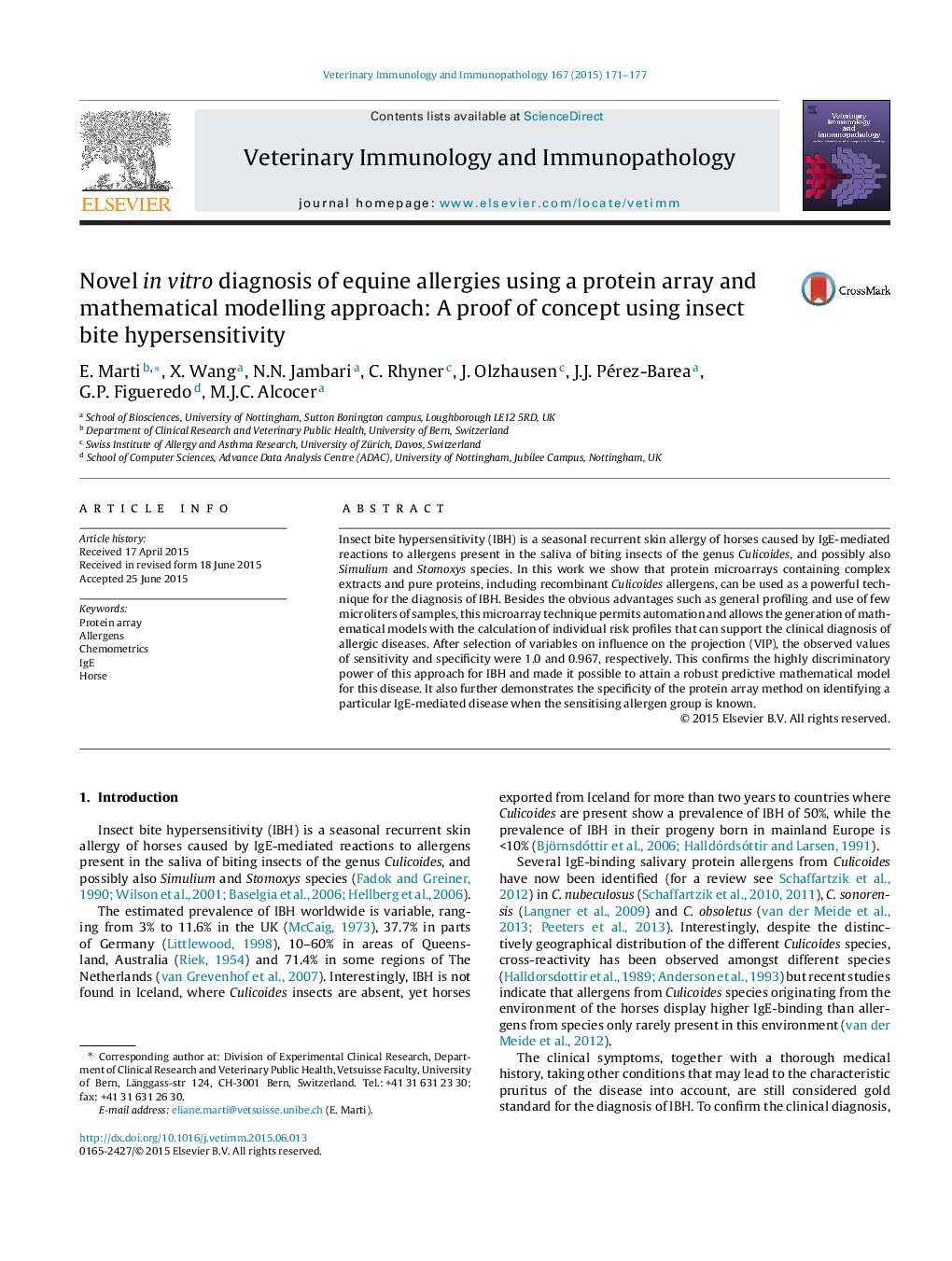| Article ID | Journal | Published Year | Pages | File Type |
|---|---|---|---|---|
| 2461398 | Veterinary Immunology and Immunopathology | 2015 | 7 Pages |
Insect bite hypersensitivity (IBH) is a seasonal recurrent skin allergy of horses caused by IgE-mediated reactions to allergens present in the saliva of biting insects of the genus Culicoides, and possibly also Simulium and Stomoxys species. In this work we show that protein microarrays containing complex extracts and pure proteins, including recombinant Culicoides allergens, can be used as a powerful technique for the diagnosis of IBH. Besides the obvious advantages such as general profiling and use of few microliters of samples, this microarray technique permits automation and allows the generation of mathematical models with the calculation of individual risk profiles that can support the clinical diagnosis of allergic diseases. After selection of variables on influence on the projection (VIP), the observed values of sensitivity and specificity were 1.0 and 0.967, respectively. This confirms the highly discriminatory power of this approach for IBH and made it possible to attain a robust predictive mathematical model for this disease. It also further demonstrates the specificity of the protein array method on identifying a particular IgE-mediated disease when the sensitising allergen group is known.
